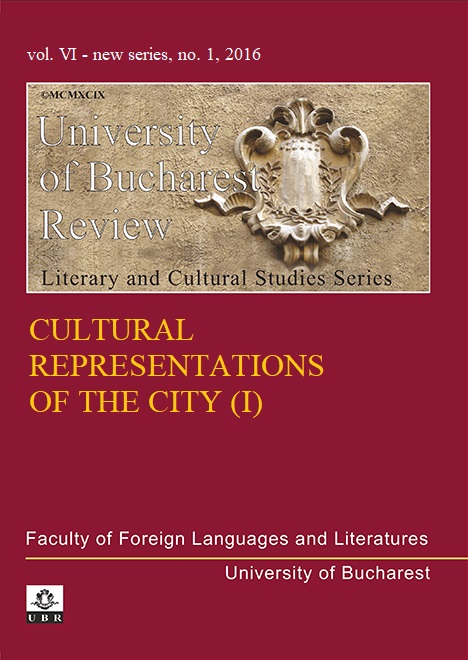“THE MAZE FACTOR” VS. “THE SOLAR EYE”:
IDENTITIES OF WALKERS AND WATCHERS
“THE MAZE FACTOR” VS. “THE SOLAR EYE”:
IDENTITIES OF WALKERS AND WATCHERS
Author(s): Marija SpirkovskaSubject(s): Cultural history, History of ideas
Published by: Editura Universităţii din Bucureşti
Keywords: James Joyce; Aldous Huxley; Alasdair Gray; cognitive mapping; modern urban planning; self-identity; labyrinth;
Summary/Abstract: This paper will aim to investigate Joyce’s Ulysses, the paradigmatic urbannovel, in juxtaposition with Huxley’s dystopian Brave New World and AlasdairGray’s ambiguous Lanark on the theoretical basis of modern urban planning,environmental psychology, and De Certeau’s analyses of modern urban living. It willcompare the contrasting perspectives of the city as a fragmenting labyrinth andintegrative panorama. The analysis telescopes on the denizens’ roles of walkers andspectators, with particular attention on cognitive mapping as vital for spatiotemporalorientation. Therefore, as the wanderings of Stephen, Bloom, and Duncan Thawdemonstrate, the practice of everyday walking in the city and the trajectory walkedare inextricably linked to the character’s inner quest for self-identity. The city mazeis as confounding as the puzzles of one’s subjective existence. Conversely, Huxley’scharacters’ panoptic vision of post-Fordian London fits an urban planner’s dream ofobjectivity, linearity, and totalitarian order where walking, I would argue, amountsto a productive anarchy against the imprisonment of individuality. Ultimately, theoptimism of Joyce and Gray testifies that the peripatetic city view, althoughdisordered, allows a dynamic inscription of subjective meanings on the materialreality, thus prevailing over any attempt to curtail its heterodoxy into a static onedimensionality.
Journal: University of Bucharest Review. Literary and Cultural Studies Series
- Issue Year: VI/2016
- Issue No: 1
- Page Range: 40-53
- Page Count: 14
- Language: English

